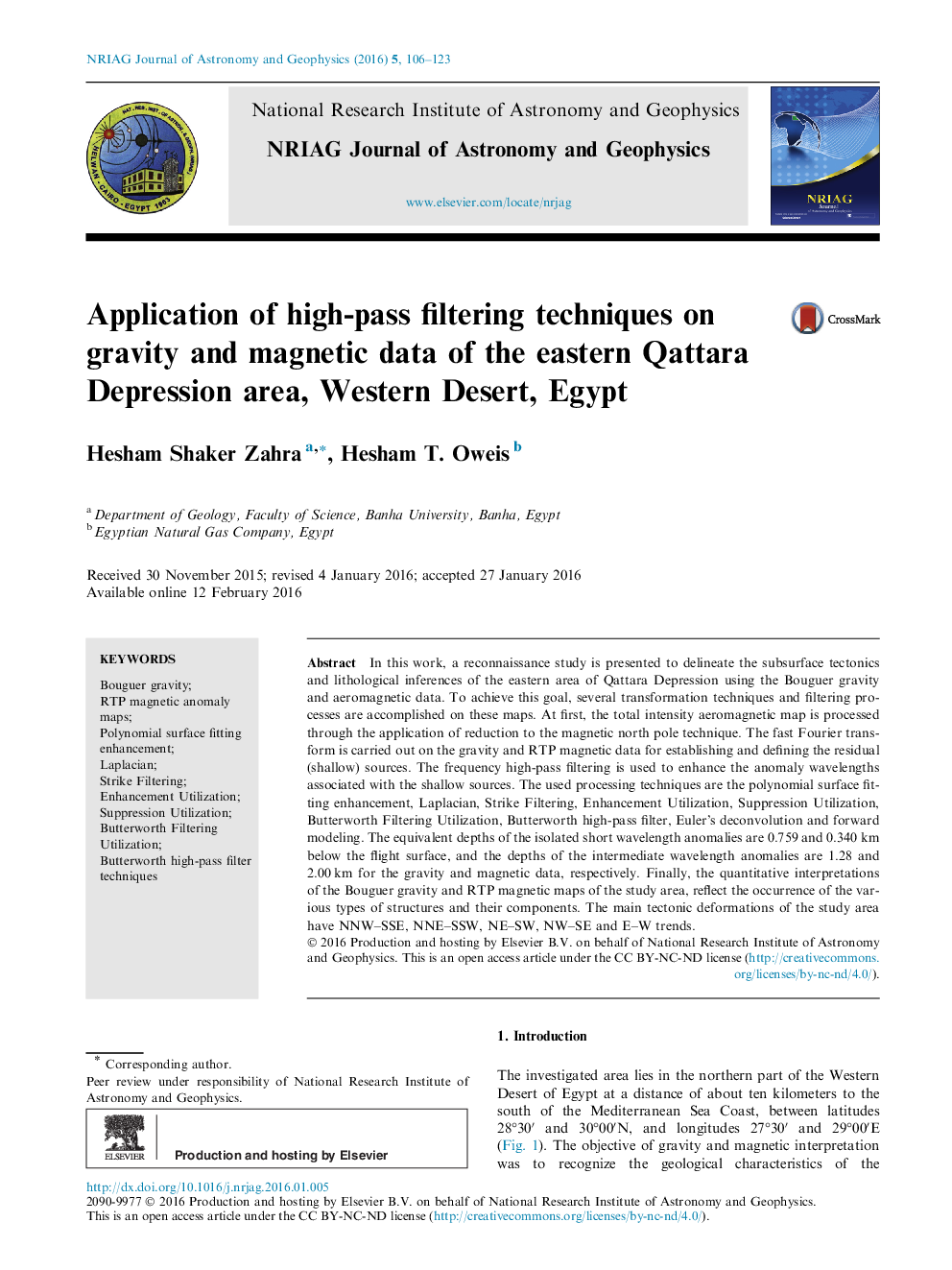| Article ID | Journal | Published Year | Pages | File Type |
|---|---|---|---|---|
| 1780560 | NRIAG Journal of Astronomy and Geophysics | 2016 | 18 Pages |
In this work, a reconnaissance study is presented to delineate the subsurface tectonics and lithological inferences of the eastern area of Qattara Depression using the Bouguer gravity and aeromagnetic data. To achieve this goal, several transformation techniques and filtering processes are accomplished on these maps. At first, the total intensity aeromagnetic map is processed through the application of reduction to the magnetic north pole technique. The fast Fourier transform is carried out on the gravity and RTP magnetic data for establishing and defining the residual (shallow) sources. The frequency high-pass filtering is used to enhance the anomaly wavelengths associated with the shallow sources. The used processing techniques are the polynomial surface fitting enhancement, Laplacian, Strike Filtering, Enhancement Utilization, Suppression Utilization, Butterworth Filtering Utilization, Butterworth high-pass filter, Euler’s deconvolution and forward modeling. The equivalent depths of the isolated short wavelength anomalies are 0.759 and 0.340 km below the flight surface, and the depths of the intermediate wavelength anomalies are 1.28 and 2.00 km for the gravity and magnetic data, respectively. Finally, the quantitative interpretations of the Bouguer gravity and RTP magnetic maps of the study area, reflect the occurrence of the various types of structures and their components. The main tectonic deformations of the study area have NNW–SSE, NNE–SSW, NE–SW, NW–SE and E–W trends.
